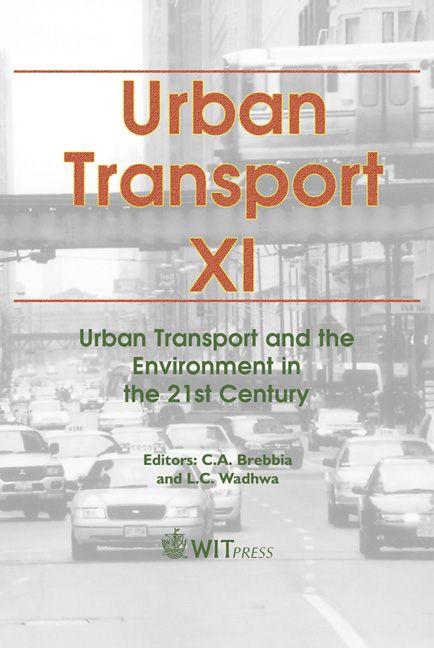An Improved Method Of Short-term Traffic Prediction
Price
Free (open access)
Transaction
Volume
77
Pages
10
Published
2005
Size
462 kb
Paper DOI
10.2495/UT050631
Copyright
WIT Press
Author(s)
J. Hongfei, T. Ming, H. Zhongxiang & Z. Xiaoxiong
Abstract
Traffic congestion is one of the most severely disturbing problems of everyday life in Metropolitan areas. An urban traffic network is at its most vulnerable during peak hours and slight fluctuations of capacity may cause severe congestion. An effective way to avoid this phenomenon is to predict and forestall congestion. Therefore the development of an accurate short-term traffic prediction method could have very real and substantial practical benefits by means of linking it with the urban traffic network control system. In this paper, an improved method is proposed which combines the ANN (Artificial Neural Network) model (used for matching the linear trends) with the fractal self-similar model (used for matching the non-linear trends), and sets proper coefficients of the two results with the real data and real-time. Result shows that the improved method can provide a more accurate prediction for short-term traffic flow in an urban area. Keywords: short-term traffic prediction, prognosis horizon, chaos, ANN (Artificial Neural Network), fractal self-similar model. 1 Introduction In recent decades growing traffic problems (congestion, emission and noise pollution etc.) have become an increasing disturbing factor both to social and economic life. Therefore, there is a research in ITS for new traffic management and information systems to solve these problems. One essential component of such systems is the prediction of traffic states (such as volume, speed and density). The information of future demand can be provided to traffic control
Keywords
short-term traffic prediction, prognosis horizon, chaos, ANN (Artificial Neural Network), fractal self-similar model.





